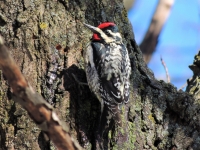The peculiar thing about this tree was that it appeared to be dead due to the lack of leaves in the middle of summer. Even more, a large portion of the upper half of the tree was completely covered by rows of holes!  It looked very much like the board of the “Peg” game across the bark. I didn’t know why they were there and it wasn’t until much later that I found out that those holes were created by a bird known as the Yellow-Bellied Sapsucker as it searched for food.
It looked very much like the board of the “Peg” game across the bark. I didn’t know why they were there and it wasn’t until much later that I found out that those holes were created by a bird known as the Yellow-Bellied Sapsucker as it searched for food. 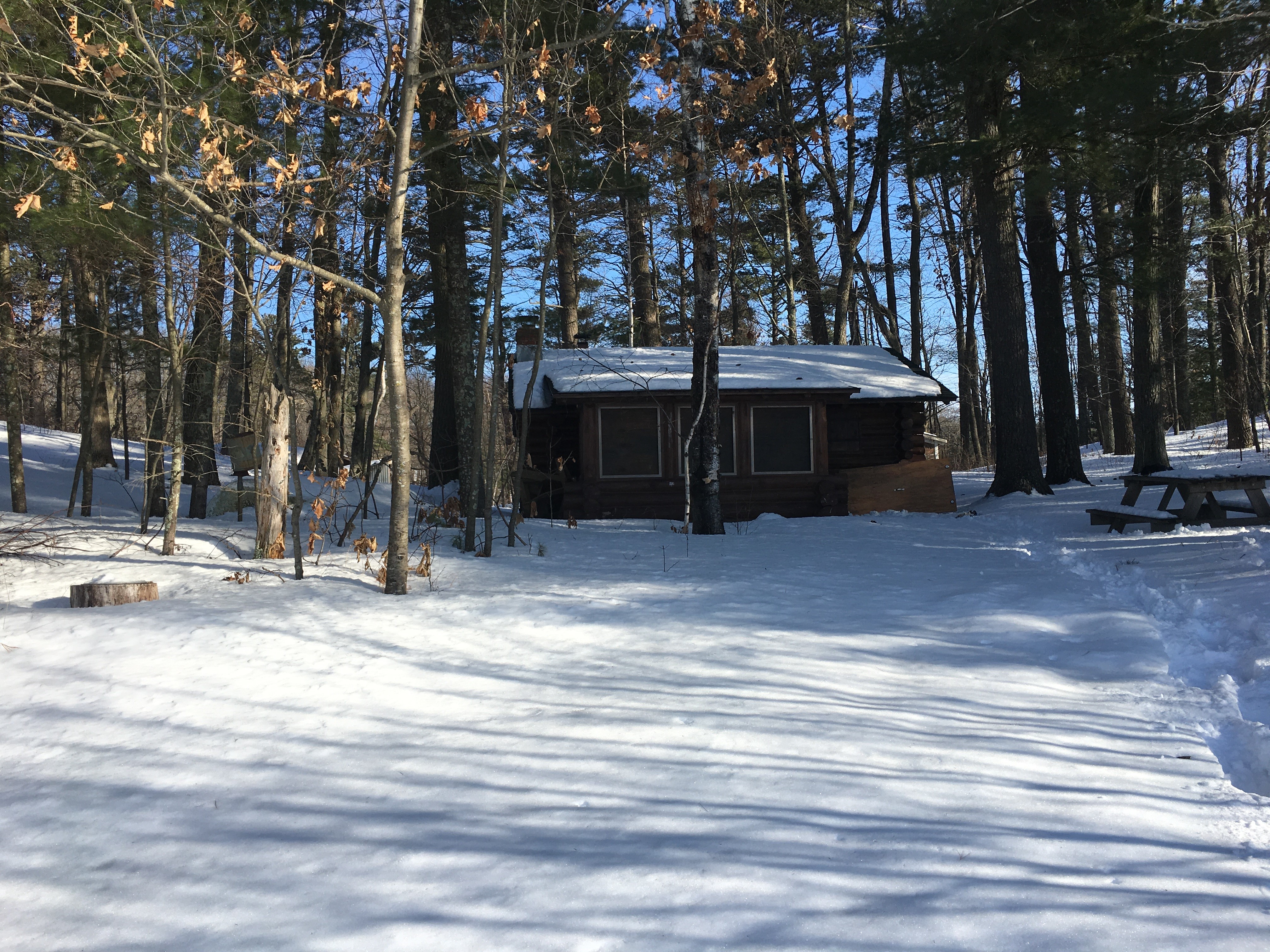
View of my family's cabin from the lake. Can you spot the birch tree that I observed as a child?
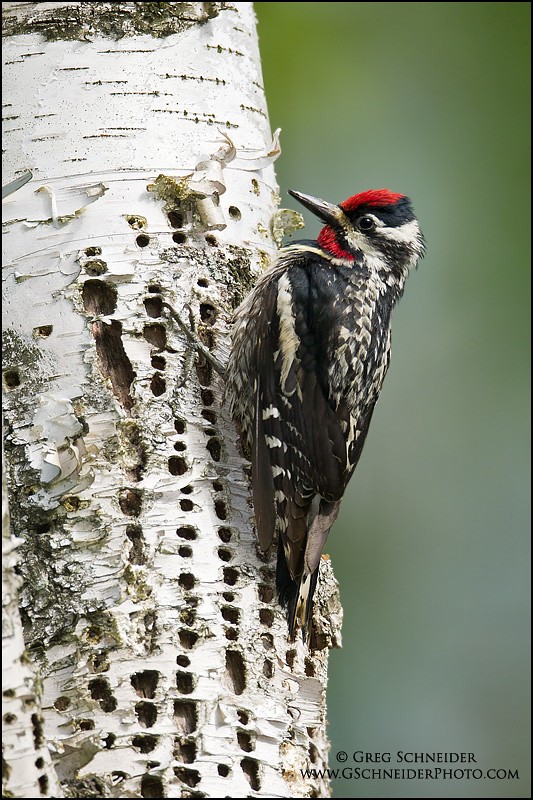 Yellow-Bellied Sapsuckers are in the same family as woodpeckers – Picidae, which are well known for their characteristic drumming and tapping of trees as they excavate cavities searching for insects. However, a big difference in behavior between Yellow-Bellied Sapsuckers and woodpeckers, in general, can be represented by their names. Yellow-Bellied Sapsuckers spend most of their time drilling sap wells into dying trees so they can lick the oozing sap and hunt for any insects that become trapped in the sap. They target both young and sick trees as the wood isn’t as hard as it is on a mature or healthy tree, but also because there is still flowing sap. Yellow-Bellied Sapsuckers create two different types of holes in the trees they tap. One type consists of narrow, round holes that go deep into the tree, reaching the xylem where the sap moves upward to feed the growth of the buds in spring. Once summer arrives, the sapsuckers change their strategy and drill shallow, rectangular indents in the phloem which isn’t as deep in the trunk. The sapsuckers must visit these areas where they have drilled to refresh the flow of sap with another round of drilling. Sapsuckers target trees high in sugar content, very much like maple sugar tappers do. Higher sugar content equals more food for their peck! What a truly incredible relationship between the flora and fauna, and I was lucky enough to observe it on a bird walk just last week.
Yellow-Bellied Sapsuckers are in the same family as woodpeckers – Picidae, which are well known for their characteristic drumming and tapping of trees as they excavate cavities searching for insects. However, a big difference in behavior between Yellow-Bellied Sapsuckers and woodpeckers, in general, can be represented by their names. Yellow-Bellied Sapsuckers spend most of their time drilling sap wells into dying trees so they can lick the oozing sap and hunt for any insects that become trapped in the sap. They target both young and sick trees as the wood isn’t as hard as it is on a mature or healthy tree, but also because there is still flowing sap. Yellow-Bellied Sapsuckers create two different types of holes in the trees they tap. One type consists of narrow, round holes that go deep into the tree, reaching the xylem where the sap moves upward to feed the growth of the buds in spring. Once summer arrives, the sapsuckers change their strategy and drill shallow, rectangular indents in the phloem which isn’t as deep in the trunk. The sapsuckers must visit these areas where they have drilled to refresh the flow of sap with another round of drilling. Sapsuckers target trees high in sugar content, very much like maple sugar tappers do. Higher sugar content equals more food for their peck! What a truly incredible relationship between the flora and fauna, and I was lucky enough to observe it on a bird walk just last week.
On a recent Washington Park bird walk in early February, volunteers encountered a juvenile Yellow-Bellied Sapsucker tapping away on a Scots Pine tree right along the UEC building. Although Yellow-Bellied Sapsuckers travel through this area in the spring and fall during migration, it is rare to see them here in the middle of winter. This is largely due to the likelihood of sap being frozen! In order to document a sighting like this, all of our weekly bird walk data are submitted into the international eBird database which helps uncover population trends, distribution patterns and establishes migration routes and timing. At this time of year for southeastern Wisconsin, eBird has listed the Yellow-Bellied Sapsucker as a rare species. In order for rare sightings like this to be confirmed, eBird asks for photographic evidence to help ensure the validity of the sighting.
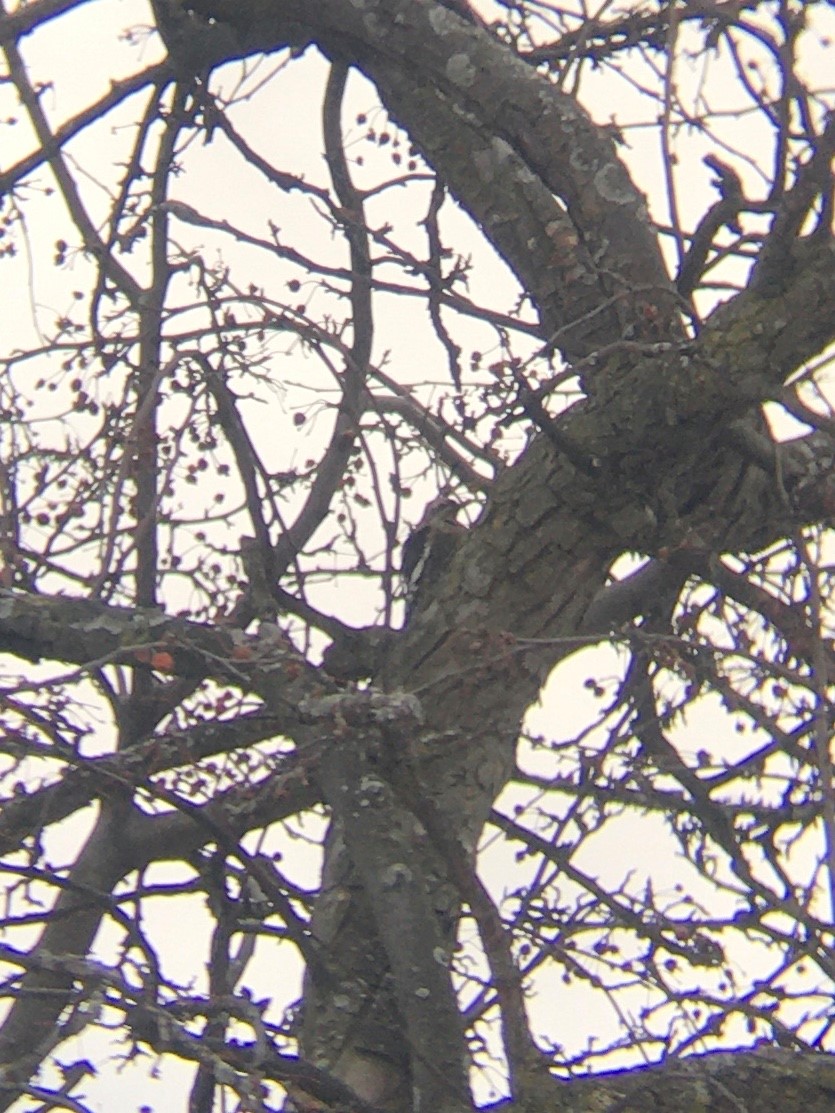 Of course, at the time of the sighting, I did not have the appropriate camera to take a quality picture. I ended up using my smartphone camera held up to the lens of my binoculars to snap a very blurry, but distinctive enough photo. I found myself kneeling in the snow to get an acceptable angle, and in doing so, I realized that I am truly a bird nerd after this experience. Although blurry, the most important part of the photo shows a bold white line traveling vertically on the bird’s wing which is a giveaway for Yellow-Bellied Sapsuckers.
Of course, at the time of the sighting, I did not have the appropriate camera to take a quality picture. I ended up using my smartphone camera held up to the lens of my binoculars to snap a very blurry, but distinctive enough photo. I found myself kneeling in the snow to get an acceptable angle, and in doing so, I realized that I am truly a bird nerd after this experience. Although blurry, the most important part of the photo shows a bold white line traveling vertically on the bird’s wing which is a giveaway for Yellow-Bellied Sapsuckers.
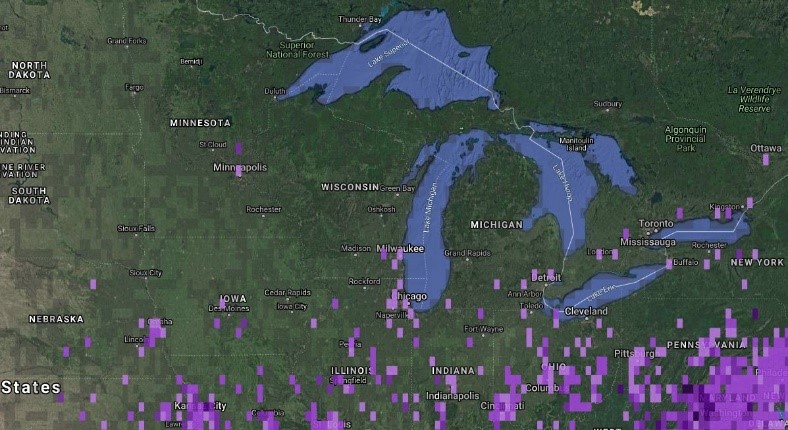
Map of all Yellow-Bellied Sapsucker observations submitted to eBird in January and February of 2020 (as of 2/10/2020).
This sighting of a Yellow-Bellied Sapsucker in early February brings up several deeper questions. Was this juvenile inexperienced in regard to migration timing? Did the recent warm weather encourage it to travel north? Have the plantings of native trees including Silver Maples encouraged this species to stop over at our urban greenspaces?
These rare sightings and the questions that arise because of them are important reasons why the Research and Community Science team collects data on birds every week at each of our three branches. Although this was just one spotting of a rare bird, the information is being contributed to data collected by over 500 million people and 737 million bird observations! This data is being used to publish research, drive management decisions and help promote sound policies that conserve species and their habitats.
Without the dedication of our community scientist volunteers and their bird watching and identification skills, we would never have the amount and quality of observations that we have now. Through the rainy days, the cold days, the hot days, and the nicest days, our community scientists are able to spot birds through the leaves, the fog, and their ears. So thank you, great bird-watching volunteers!
We hope you are inspired to spot all kinds of birds with us at one of our weekly bird walks at any of our three branches. If you are new to bird watching, we have binoculars for you to use and a community of volunteer scientists willing to help you learn and discover the beauties of birding! We would love to see you out there!


